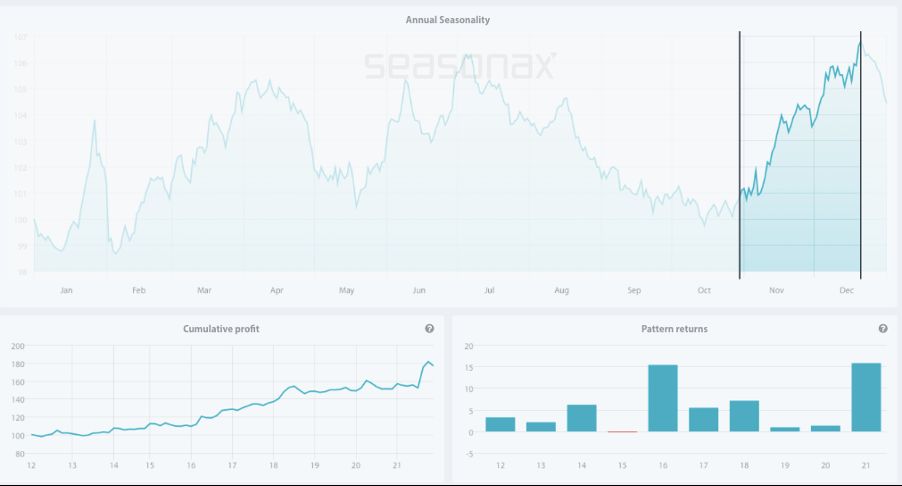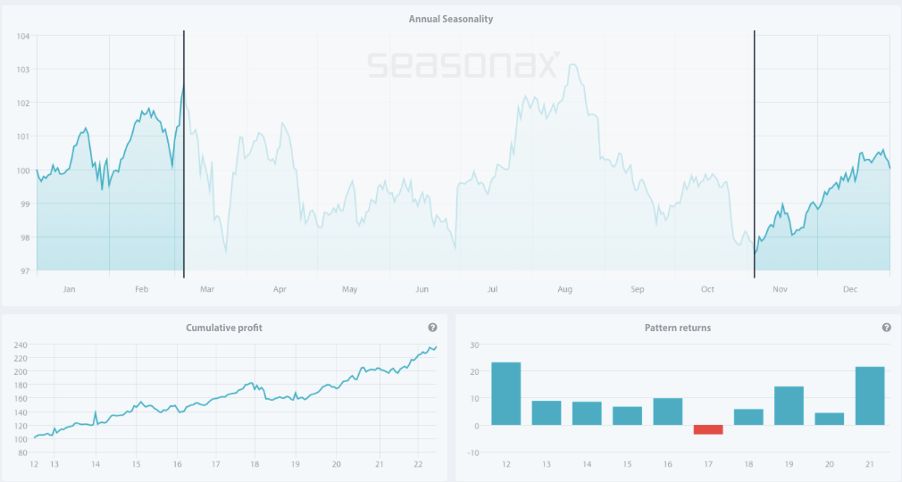Dear Investor,
There are a number of horror stories accompanying the markets these days: surging inflation, decelerating growth and energy price hikes. Nevertheless, there is one more spine-tingling event coming up on October 31: Halloween!
While there is of course something particularly spooky about this day, it actually marks the start of a period that tends to yield promising returns for investors.
Total Halloween spending is projected to reach a staggering $10.6 billion this year, according to the National Retail Federation. This includes sales of candy, costumes, decorations and greeting cards.
However, as well as short upcoming trends in the stocks of some popular candy retailers, there is also a long-lasting trend surfacing in the coming weeks: the so-called “Halloween Effect”.
The Halloween Effect
It originated in London in the late 16th century, and has been passed from trader to trader ever since. This widely discussed phenomenon has in fact gone beyond the interest of seasonal experts. It has also been considered by numerous scholars, including: Jacobsen & Visaltanachoti, Haggard & Witte, Maberly & Pierce, and many others. It clearly has evidence worthy of note.
The Halloween Effect defines the tendency of the market to perform better from November 1 to April 30, compared to the other months of the year. In search of proof, I have analysed a seasonal chart of the S&P 500 Index of the last 25 years. Strikingly, from November to April higher profits are achieved than over the rest of the year.
We are going to consider therefore how you can use seasonality, and statistical probability of pattern recurrence, to strengthen your trading in light of Halloween.
What Drives the Halloween Effect?
The retail sector, with the approach of the holiday shopping season, is one of the drivers of the surge in stocks in coming months. Halloween is just one of the sales events that unleashes additional spending. Next in the calendar is Black Friday, also set to contribute to rising stock prices, as well as the traditional year-end stock rally and investor sentiment during the festive season.
Retailers, and the entertainment industry, will see high surges in demand in the upcoming months. With this is mind, let’s look at the seasonal chart of Tootsie Roll Industries, a Chicago-based candy manufacturing and distribution company, that produces all kind of candies for trick-or-treaters. The company is one of only 20 companies that have successfully grown dividends yearly for the past half-century, making it a potentially stable seasonal stock among its rivals.
Seasonal Chart of Tootsie Roll Industries Inc over the past 10 years

Source: Seasonax, click here to open an interactive chart
Keep in mind that a seasonal chart depicts the average price pattern of a stock in the course of a calendar year, calculated over several years (unlike a standard price chart that simply shows stock prices over a specific time period). The horizontal axis depicts the time of the year, while the vertical axis shows the level of the seasonal pattern (indexed to 100).
From the chart above, it is clear that for this candy stock that during the past 10 years the end of October until mid-December have been favourable months. In this time span of 39 trading days (from October 27 until December 21), shares rose on average by 6.5%. Moreover, the pattern returns in that period have been consistent and positive since 2011, with just one outlier year in 2015 when the stock posted a loss of 1.12% in the specified period.
Another company that has sweetened up our investments in previous years is the Hershey Company. Hershey is the leading confectionery manufacturer in the U.S., controlling roughly 46% of the domestic chocolate market. It has succeeded in incorporating over 100 brands into its portfolio in addition to its own label.
This company has a strong seasonal period from November extending into the first quarter of the year, and is marked with average returns of around 10%.
Seasonal Chart of The Hershey Company over the past 10 years

Source: Seasonax, click here to open an interactive chart to find out the exact dates of this seasonal pattern
However, will this year’s Halloween Effect be more trick than treat? Time will tell. Markets are not the most reliable partner, but seasonality allows us to determine the probability of certain price moves. As a trading strategy, it is one of just a few approaches that are statistically verifiable and has consistently created added value for investors. In other words, you can incorporate seasonality, and the use of statistical probability and pattern recurrence, into the trading approaches you have employed so far.
Enter the world of seasonal opportunities
Regardless of exactly how Halloween and other consumer holiday spending turns out this year, shopping euphoria should eclipse this year’s market rollercoaster for at least a brief moment. Prepare in advance; and make sure to use Seasonax to detect market opportunities within seconds.
By signing up for free to https://app.seasonax.com/signup, you will be able to identify the best entry and exit points for more than 25.000+ instruments, including stocks, (crypto)currencies, commodities, and indexes.
Yours sincerely,
Tea Muratovic
Co-Founder and Managing Partner of Seasonax


